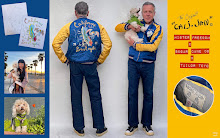On Aug. 14, 1982, President Ronald Reagan recognized a group of some 400 Native American service members known as "Navajo Code Talkers" for using their native language to keep U.S. military communications from being intercepted and decrypted during WWII.
It is a great American story that is still largely unknown—the story of a group of young Navajo men who answered the call of duty, who performed a service no one else could, and in the process became great warriors and patriots. Their unbreakable code saved thousands of lives and helped end WWII.
During the early months of WWII, enemy intelligence experts broke every code the US forces devised. They were able to anticipate American actions at an alarming rate. Military leaders finally complained that sending and receiving these codes required hours of encryption and decryption—up to two and a half hours for a single message. They rightly argued the military needed a better way to communicate.
When Phillip Johnston, a civilian living in California learned of the crisis, he had the answer. As the son of a Protestant missionary, Johnston had grown up on the Navajo reservation and was one of less than 30 outsiders fluent in their difficult language. He realized that since it had no alphabet and was almost impossible to master without early exposure, the Navajo language had great potential as an indecipherable code. After an impressive demonstration to top commanders, he was given permission to begin a Navajo Code Talker test program.
Their elite unit was formed in early 1942 when the first 29 Navajo Code Talkers. Although the code was modified and expanded throughout the war, this first group was the one to conceive it. Accordingly, they are often referred to reverently as the "original 29". Many of these enlistees were just boys; most had never been away from home before. Often lacking birth certificates, it was impossible to verify ages. After the war it was discovered that recruits as young as 15 and as old as 35 had enlisted. Age notwithstanding, they easily bore the rigors of basic training, thanks to their upbringing in the southwestern desert.
The code they created at Camp Pendleton was as ingenious as it was effective. It originated as approximately 200 terms—growing to over 600 by wars end—and could communicate in 20 seconds what took coding machines of the time 30 minutes to do. It consisted of native terms that were associated with the respective military terms they resembled. For example, the Navajo word for turtle meant "tank," and a dive-bomber was a "chicken hawk." To supplement those terms, words could be spelled out using Navajo terms assigned to individual letters of the alphabet—the selection of the Navajo term being based on the first letter of the Navajo word's English meaning. For instance, "Wo-La-Chee" means "ant," and would represent the letter "A". In this way the Navajo Code Talkers could quickly and concisely communicate with each other in a manner even uninitiated Navajos could not understand.
Camp Pendleton
Once trained, the Navajo Code Talkers were sent to Marine divisions in the Pacific theater of WWII. Despite some initial skepticism by commanding officers, they quickly gained a distinguished reputation for their remarkable abilities. In the field, they were not allowed to write any part of the code down as a reference. They became living codes, and even under harried battle conditions, had to rapidly recall every word with utmost precision or risk hundreds or thousands of lives. In the battle for Iwo Jima, in the first 48 hours alone, they coded over 800 transmissions with perfect accuracy. Their heroism is widely acknowledged as the lynchpin of victory in the pivotal conflict.
For the Birds
13 years ago



























No comments:
Post a Comment